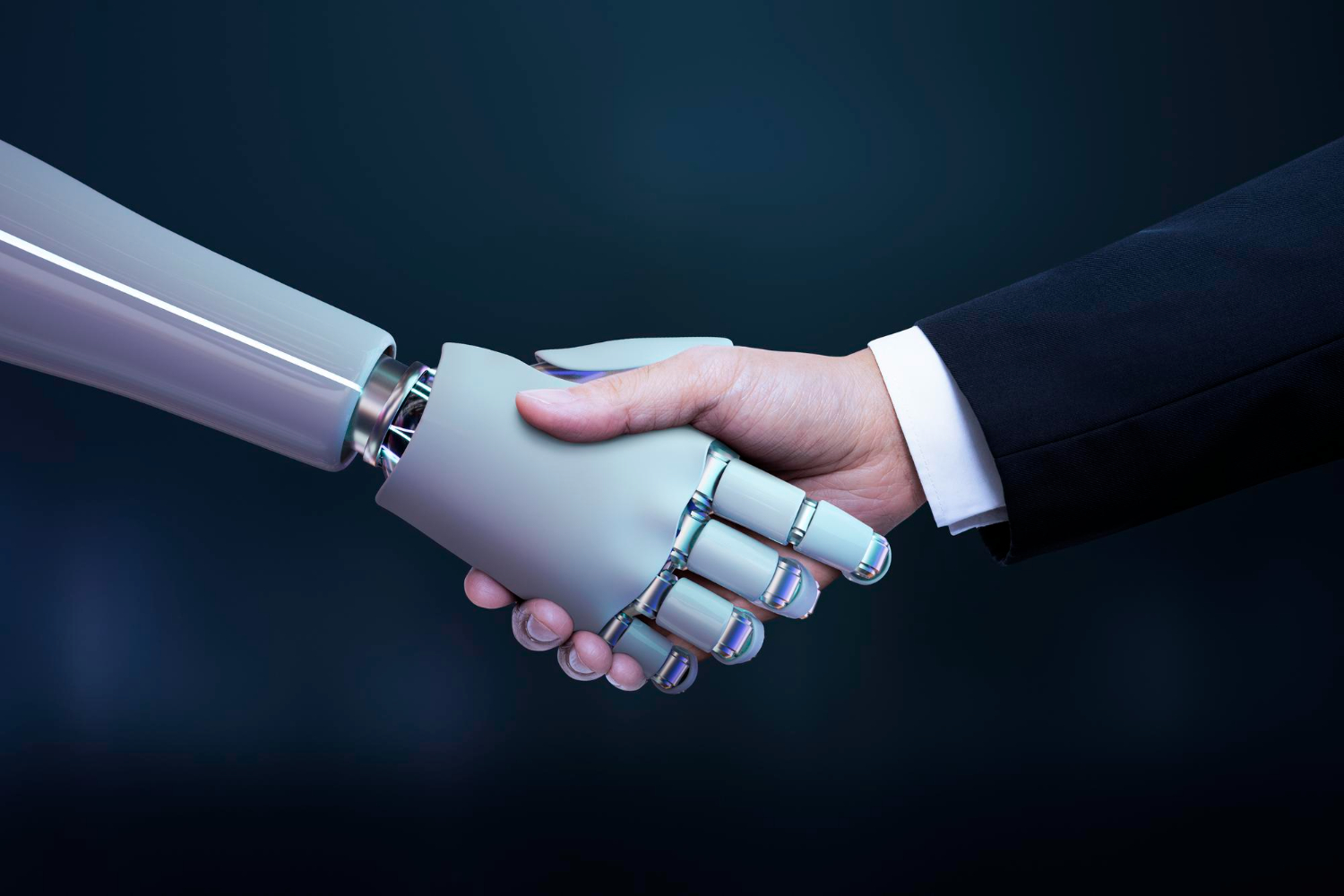Unlocking Education Future: AI’s Opportunities & Challenges

Artificial Intelligence (AI) has emerged as a transformative technology, revolutionising numerous industries, and education is no exception. From personalised learning experiences to intelligent tutoring systems, AI holds immense potential to enhance the quality, efficiency, and accessibility of education. However, along with the opportunities AI brings, significant challenges also need to be addressed.
This blog will explore how AI can benefit education while considering the associated challenges.
Opportunities
Personalised Learning
AI facilitates personalised learning experiences by adapting the curriculum and teaching methods to individual students’ needs, interests, and learning styles. By analysing vast data, AI algorithms can identify students’ strengths, weaknesses, and knowledge gaps, enabling tailored instruction. Personalised learning promotes active engagement and enhances students’ motivation, ultimately improving learning outcomes.
- AI analyses data to understand each student’s unique learning needs, allowing for customised instruction.
- By adapting the curriculum and teaching methods, AI ensures students receive relevant and targeted content.
- Personalised learning enhances student engagement and motivation, resulting in better learning outcomes.
Intelligent Tutoring Systems
Intelligent Tutoring Systems (ITS) leverage AI to provide students with interactive and adaptive support. These systems use advanced algorithms to comprehend the students’ progress and offer immediate feedback, guidance, and additional resources. By continuously analysing student responses and learning patterns, ITS can customise instruction in real-time, providing targeted assistance where needed. This personalized approach helps students grasp concepts more effectively and fosters independent learning.
- ITS uses AI algorithms to adapt instruction based on each student’s progress, ensuring personalised support.
- Real-time feedback and guidance from ITS help students identify and overcome learning challenges.
- The adaptive nature of ITS fosters independent learning and allows students to learn at their own pace.
Automated Grading and Feedback
AI-powered tools can automate the grading process, alleviating teachers’ workload and providing prompt student feedback. Machine learning algorithms can analysse and evaluate assignments, quizzes, and tests, enabling faster grading and reducing human bias. Automated grading also provides students with immediate feedback, allowing them to identify improvement areas and enhance the learning process.
- AI automates the grading process, saving teachers time and effort.
- Machine learning algorithms ensure faster and more accurate grading, reducing human bias.
- Immediate feedback from automated grading helps students identify strengths and weaknesses, enabling focused improvement.
Intelligent Content Creation
AI can assist in generating educational content, such as quizzes, worksheets, and lesson plans. Natural Language Processing (NLP) algorithms can analyse existing educational resources and create new content aligned with specific learning objectives. This saves teachers’ time and ensures the availability of high-quality and up-to-date resources for students.
- NLP algorithms analyse educational resources to create new content that aligns with learning objectives.
- AI-generated content saves teachers’ time and ensures the availability of diverse and relevant resources.
- High-quality and up-to-date educational content enhances the learning experience for students.
Virtual Reality and Augmented Reality
AI combined with Virtual Reality (VR) and Augmented Reality (AR) technologies opens new possibilities for immersive and interactive learning experiences. VR allows students to explore virtual environments, enhancing their understanding of complex concepts like scientific phenomena or historical events. AR overlays digital information onto the real world, enabling students to interact with virtual objects and creating engaging and memorable educational experiences.
- VR and AR technologies, powered by AI, create immersive learning experiences that enhance understanding.
- VR enables students to explore virtual environments, making abstract concepts more tangible and relatable.
- AR overlays digital information in the real world, providing interactive and engaging educational experiences.
Challenges
Privacy and Ethical Concerns
The use of AI in education raises important privacy and ethical considerations. As AI systems collect and analyse vast amounts of student data, protecting sensitive information is crucial. Educational institutions must establish robust security measures to safeguard student privacy and comply with data protection regulations. Additionally, ethical concerns may arise regarding the decisions made by AI systems, such as personalised recommendations or grading. Transparency and accountability are essential in AI-driven educational environments.
- Protecting student data is essential to maintain privacy and comply with data protection regulations.
- Educational institutions need to implement robust security measures to safeguard sensitive information.
- Ensuring transparency and accountability in AI systems helps address ethical concerns related to personalised recommendations and grading.
Equity and Access
While AI has the potential to bridge educational gaps and provide equal opportunities, it is crucial to address issues related to equity and access. The availability of AI-driven resources and technologies should not exacerbate existing disparities but rather strive to reach all students, regardless of their socioeconomic background or geographical location. Ensuring equitable access to AI-powered educational tools is essential for creating a fair and inclusive learning environment.
- AI should aim to provide equal opportunities for all students, regardless of socioeconomic background or location.
- Efforts should be made to minimise disparities in access to AI-driven resources and technologies.
- Creating a fair and inclusive learning environment ensures equitable access to AI-powered educational tools.
Training and Professional Development
The successful integration of AI in education requires teachers to possess the necessary skills and knowledge. Training and professional development programs should be implemented to familiarise educators with AI technologies and equip them to leverage these tools effectively. Collaborative efforts between educational institutions, technology companies, and policymakers can significantly advance AI literacy among educators.
- Teachers need training and professional development programs to understand and effectively use AI technologies.
- Collaborative efforts between institutions, technology companies, and policymakers can enhance AI literacy among educators.
- Equipping teachers with AI skills and knowledge is crucial for successfully integrating AI into education.
Reliability and Bias
AI systems are only as good as the data they are trained on. Biases present in the training data can lead to biased recommendations, unfair grading, or reinforced stereotypes. Ensuring that AI systems are trained on diverse and representative datasets is essential to minimise bias. Ongoing monitoring and evaluation of AI algorithms are necessary to identify and rectify any biases that may emerge during their use in educational settings.
- AI systems must be trained on diverse and representative datasets to minimise biases.
- Ongoing monitoring and evaluation of AI algorithms help identify and rectify biases in educational settings.
- Mitigating biases in AI systems ensures fair and unbiased recommendations, grading, and decision-making.
Human-AI Collaboration
Maintaining a balance between AI-driven technologies and human involvement is crucial in education. While AI can automate certain tasks, it should not replace human teachers entirely. The human touch, empathy, and creativity are irreplaceable aspects of education. AI should be seen as a tool to support teachers and enhance their capabilities, allowing them to focus on more personalised interactions and higher-order thinking skills.
- AI should be viewed as a tool to support teachers, not replace them entirely.
- Human involvement is necessary to provide empathy, creativity, and personalised educational interactions.
- Maintaining a balance between AI-driven technologies and human teachers enhances the educational experience.
In conclusion, AI in education presents numerous opportunities to revolutionise how we learn and teach. From personalised learning experiences to intelligent tutoring systems, AI has the potential to enhance education by tailoring instruction, automating grading, and creating immersive learning environments. However, challenges such as privacy concerns, equity and access issues, and biases must be addressed for AI to be effectively and ethically integrated into education. By recognising these opportunities and challenges, we can harness the power of AI to create a more inclusive, engaging, and effective educational landscape.
Be sure to check out our other related posts if you enjoyed this one:
- The Rise of Collaborative Robots: Transforming Industries
- Unmasking Cyber Secrets: The Art of Deception Revealed!
- Decoding Cyber Threats: The Social Engineering Menace
- Unlock the Ultimate Quest: Ready Player One’s Audio Adventure!
- Revolutionising Wellness: Metaverse Therapy Unleashes Mental Liberation!
- Code Mastery Unleashed: Transform Your Skills with Clean Code by Robert C. Martin! 🚀
- Top Must-Have Tech Gadgets for Kids – Unbelievable Fun!
- Mastering Crypto Trading: Proven Strategies
- Unveiling Ethereum 2.0: Advancements & Impact
- AI Transforms E-Commerce: A Digital Revolution
Sign up for updates on this blog and our latest tech posts if you enjoyed reading this one.
Share our blog content with your friends and colleagues via Facebook, Twitter, Pinterest, LinkedIn, email or WhatsApp links below and help them stay informed about the latest insights on business, marketing, finance, lifestyle, and society. Let’s build a knowledge-sharing community and empower each other to achieve and experience our goals.
FAQ
How does AI facilitate personalised learning experiences in education?
- AI analyses data to understand each student’s unique learning needs, allowing customised instruction.
- By adapting the curriculum and teaching methods, AI ensures students receive relevant and targeted content.
- Personalised learning enhances student engagement and motivation, resulting in better learning outcomes.
What are Intelligent Tutoring Systems (ITS), and how do they leverage AI?
- ITS uses AI algorithms to adapt instruction based on each student’s progress, ensuring personalised support.
- Real-time feedback and guidance from ITS help students identify and overcome learning challenges.
- The adaptive nature of ITS fosters independent learning and allows students to learn at their own pace.
How does AI automate the grading process in education?
- AI automates the grading process, saving teachers time and effort.
- Machine learning algorithms ensure faster and more accurate grading, reducing human bias.
- Immediate feedback from automated grading helps students identify strengths and weaknesses, enabling focused improvement.
How does AI assist in content creation for education?
- NLP algorithms analyse educational resources to create new content that aligns with learning objectives.
- AI-generated content saves teachers’ time and ensures the availability of diverse and relevant resources.
- High-quality and up-to-date educational content enhances the learning experience for students.
Credits
- Featured photo by Pixabay on Pexels.









